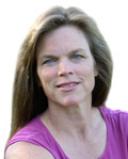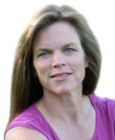Wisdom
Is Pain a Kind of Bodily Wisdom?
When everything hurts, how do you find new ways to move?
Posted November 17, 2019
To be a bodily self is to have a capacity to feel pain -- whether the physical pain of injury or illness; the emotional pain of grief, longing, and frustration, or the spiritual pain of meaninglessness, lack of purpose, or a sense of not belonging. In a culture that privileges health and well-being, suffering from any of these pains can be a reason for shame -- we don't want to feel it, and feel we shouldn't. Often we try to ignore the pain, push through it, or numb ourselves to it with various medicinal means. While acute pain may need professional attention, much of our pain -- our aches and worries and anxiety and malaise -- needs something else. It needs us to move.
From an evolutionary perspective, a capacity to feel pain evolved as a way to help bodies move safely and effectively. As neuroscientists like Daniel Wolpert and Rudolfo Llinas argue, bodies developed a brain -- that is, a capacity to record patterns of movement -- so that they could remember which movements produce pleasure and which do not. Pain, then, is not necessarily a sign of breakdown; it contains a treasure trove of bodily wisdom about how to move differently, in ways that promote healing and vitality. And as my research has shown, the way to tap that wisdom -- to open to it and receive it -- is by engaging in movements that require us to breathe deeply, release muscular tension, and awaken a sensory awareness of our bodily selves as moving. When we do, new ideas and perspectives -- new impulses to move -- arise (See also Fogel 2009).
What if we learned to shift our experience of pain? What if we learned to sense and respond to pain of all kinds not as a "problem," but as an invitation to move differently?
I offer one anecdote to illustrate what such a shift in perspective looks like, and how movement works to release the wisdom of our relational, sensory selves.
*
I wake up feeling really depressed. My lower right leg is outright aching, as if sirens are sounding in every cell. My hips hurt. My heart hurts. I feel defeated by the silence around the release of my latest project, unloved, unlovable, trying so hard to give a gift, and failing. Why bother? The pain of the world flattens me. I don’t want to do anything except slip back into sleepy oblivion. But I am awake. The rest of my family is still asleep.
I go downstairs, make a fire in the woodstove, have some breakfast, and go outside to feed the chickens and our small calf Cypress. I see the setting moon, the winter blue sky, the grass greenly peeking through crusty snow, and none of it moves me. I want to run. I desperately need to run. But I am afraid – afraid that the pain in my legs and hips will stop me.
Back inside, I settle my right hip on top of a lacrosse ball and roll around so that the ball presses into the surrounding tissue. I gasp with pain. I breathe into it. The ache in my lower leg eases. Maybe there is some hope. I get dressed to run and go outside again. I start to move, slowly at first, pushing through one leg and then the other, hoping and praying that I won't feel too much pain. I feel OK. It seems like a miracle.
The wind bites my cheeks but the sun beckons me on. I can feel its warmth through my jacket. I pick up the pace a tiny bit. Tension in my chest, that I didn’t know I had, releases. Space to breathe that I had lost returns. In response to these sensations, I take a deep breath and then a deeper breath, and suck in clear, clear air that cuts through the murk in my soul. I let the world exhale me, softly. My shoulders drop an inch. Heat gathers in my belly, rising up my spine. Layers of anxiety, hardened overnight, soften.
I exhale as fully and forcefully as I had drawn the air in, emptying myself out into the trees, brambles, bushes, and bulrushes around me. I let the cleansing cold stream in, pure. Holy. It cools my distress. Churning thighs motor on, pressing me against the wind, as I lean into it. With every footfall, gravity lurches me forward and the earth catches me. Lurch and catch. I throw my bodily self into space and the ground steadies me, guiding me onward. Again. And Again. I think of the dancer Martha Graham: I choose not to fall.
One mile. Two miles. Three. Four. I start sweating. It feels good. Shades fall from my eyes, and I begin to see in such a way that I am touched by what appears to me. By the time I arrive home, I can see that the blue in the sky reaches from the heavens to wrap me in goodness. I can see that the green blades are resilient and upright, adorned and not burdened by ice crystals glowing white. I can see the eyes of our small Cypress, peering out from her fluffy fuzzball face, all ready for winter. Adorable. I can see a perfect round egg, warm in my palm, laid by one of our hens, as a gift left for me. And I thank them all.
I stretch my calves on the steps leading to the door of the house, letting my weight sink my heels down and feeling the delicious release that happens in muscles when the work is done. I put my right leg up on the railing, allowing one hamstring to remember its length. Then the other. My sensory awareness plays along muscle planes that gesture to infinity. Words of Nietzsche come to mind: So what if you have failed? How much is still possible? How much is still possible?
Inside, water from the tap tastes so good. I drink deeply. I cook my one egg. A sweet hunger opens to receive it. I don’t want more, only enough to stay open to this sweetness. More words of Graham come to mind: Stay hungry, and keep eating. And I know. Without the pain in my leg, I wouldn’t have rolled my hips on the ball, and found that release. Without the pain in my heart, I wouldn’t have needed to run so badly. Without a tumultuous, unpredictable, unruly desire to live, where would I be?
I recommit to living my life as a bodily self.
*
Living life as a bodily self is not easy. To commit to it is to practice paying attention to what you feel – all of it – the pain, the depression, the distress, the longing, the dissatisfaction, the disappointment. The despair. And the fear that these pains of all kinds will prevent you from doing and being and becoming who you are. From giving what you have to give. From achieving all you want to achieve.
But time and again, I have found the reverse is true. The pain that looms as an obstacle and threat is so often the very condition that enables a breakthrough. It’s the wisdom of our vulnerable, relational, empathic bodily selves expressing itself in a way our wayward minds will listen — a wisdom that we can open to receive when we commit to feeling and moving. We can squirm, wiggle, and shake; or dance, play or run, so long as we loosen and expand our mental grip enough to receive what our responsive selves remember. That giving is good. That movements matter. That earth and multitudes of earth's communities live through us.
We can numb our pain, covering it up with sensory distractions; we can find a pleasant pleasure that fades as soon as we start to wake up. Or we can get ourselves moving, and open up to be healed by the earth of which we are one active, enabling part. We can move into a sensory space where the earth sparks us to respond, coaxing forth a will to create and participate. When the sizzle of sensory awareness crackles, we feel the blast of being alive, grateful for calf eyes and resilient greens; for the planet who pulls us close and presses us up, the forces that move us along, and the currents that breathe us to life. How much is still possible?
Now I feel better.
References
Fogel, Alan. 2009. The Psychophysiology of Self-Awareness. Norton.
Llinas, Rodolfo. 2001. I of the Vortex. MIT Press.
Wolpert, Daniel. "The Real Reason for Brains" TED talk. https://www.ted.com/talks/daniel_wolpert_the_real_reason_for_brains




